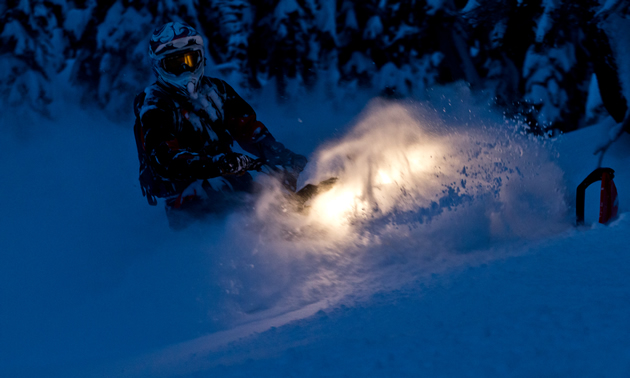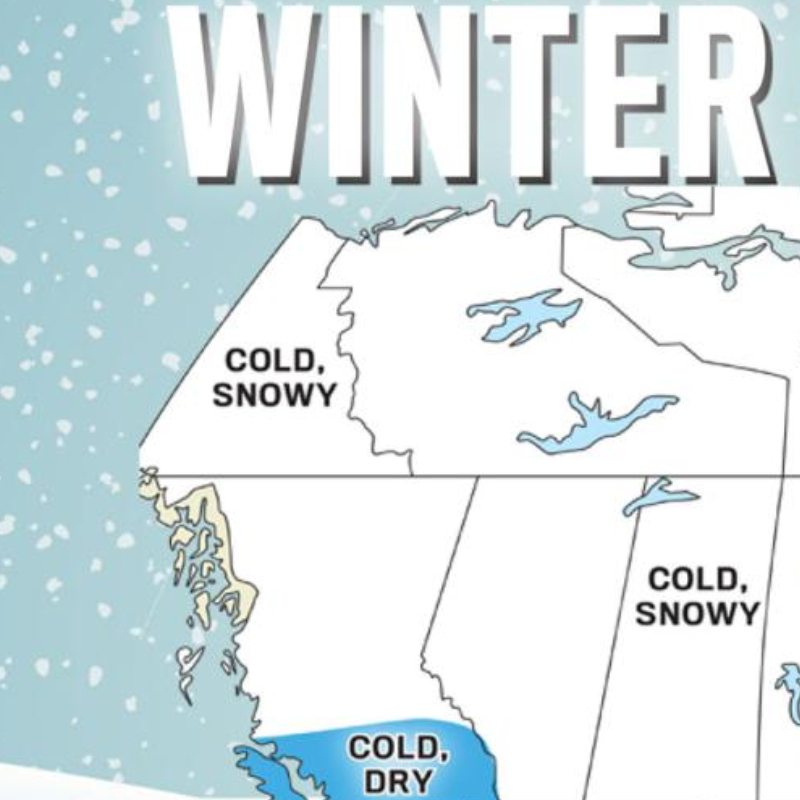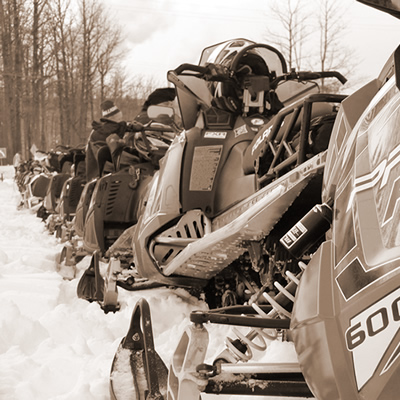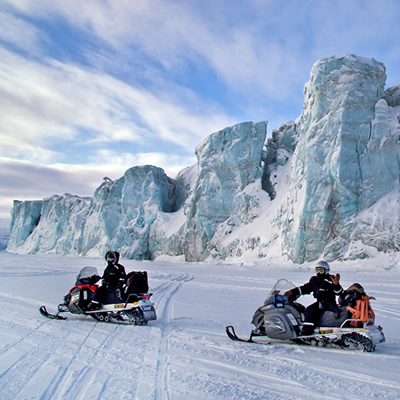The silence envelopes us as we hit our kill-switches. It's a quiet that encourages you to look around in wide-eyed wonder, trying to soak everything in even though it is dark. The night blankets everything, including sound. In a place that is busy with sleds during the day there isn’t a person to be found but those who are in your crew. The darkness provides a peacefulness that is not usually found during the daylight hours. Nothing moves—the air is calm as not a breath of wind pervades the stillness.
We started night riding as a way to maximize our sled days each week. Those pesky things known as jobs get in the way of shred time and night riding was the only option to get in more throttle time. These forced missions turned into fun and now we night ride even when there isn’t the same need for it. It is a totally different experience compared to riding during the day with its own pleasures. And let's face it, with the short days of December, you’re just not always ready to call it quits when the sun sets.
Proper preparation
Preparing for a night ride really doesn’t take anything more than what you would normally pack. Make sure your gas tank is full and you have the usual avalanche and safety gear, some spare gloves and goggles, food and water and you should be good to go.
The headlights of the sled are generally powerful enough to illuminate most of the darkness but if you want to get really tricky, then find yourself a good headlamp that you can mount on your helmet. The advantage of the headlamp is threefold: not only does it provide you with more light but being higher up it is less likely to be buried in snow, and it is directional. As opposed to headlights that always point wherever the front of the sled is aimed, the headlamp provides light to where you are looking. This may seem simple, but think about it—when initiating a turn you look in that direction before the sled starts to lean that way and in some cases you may be sidehilling one way while looking for a clean line through the trees somewhere else.
Stick with what you know
The most important part of the preparation is choosing a riding area. For reasons of safety, it is best to pick somewhere that you are intimately familiar with. The dark is not the best time to be exploring a new zone. Going somewhere that is a little flatter and that doesn’t have terrain traps, crevasses, open creeks or anything else that can swallow you up is wise. These things tend to jump out at you at the last minute in the dark, making it difficult to avoid ’em. Being in a comfortable zone also means you can ride harder with more confidence as well.
Like riding in a whiteout, lights make things a little funky if you don’t have landmarks or anything to give you contrast, and rolling, open, alpine terrain becomes strange and harder to read. For this reason, the trees are the place to be. They light up well and are great indicators for what is coming up.
A surreal experience
Riding at night is just pure fun at its best but when you get it right—wow—it can be one of the most surreal experiences of your life. Picture a small crew with a mountain to yourselves—maybe it’s clear, starry skies with a full moon lighting up the landscape or a snowy night with some fresh powder on the ground. As your sled pops up and down through the powder, over and through the snow, your headlights appear between turns and disappear as you dive under. It’s a totally different feeling than riding during the daylight hours. All your senses are firing just a little more and it’s riding by feel as much as by sight at times.
If work is getting in the way, or you need a last-minute stress relief, load up your rig, grab a friend and head out into the darkness. You might get a few head shakes from riders coming down at the end of a day but after your first night ride, you'll be shaking your head at them since they don't know what they are missing.







